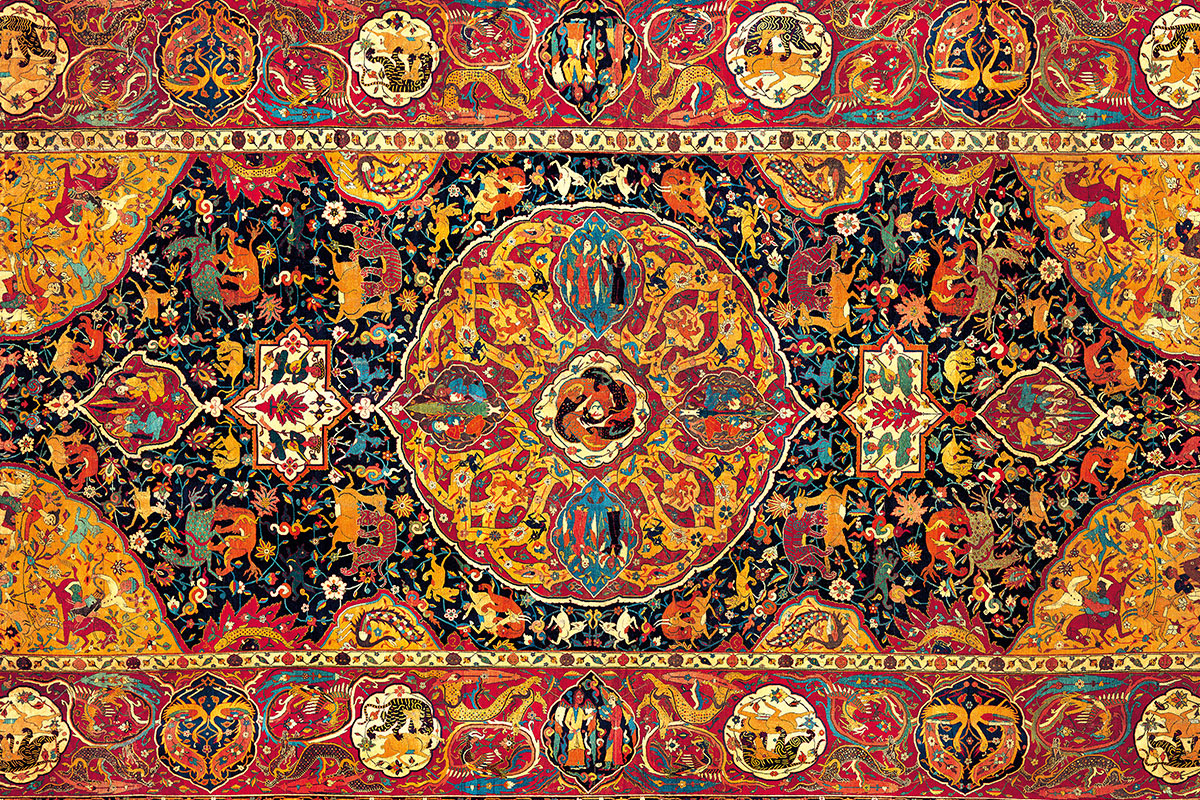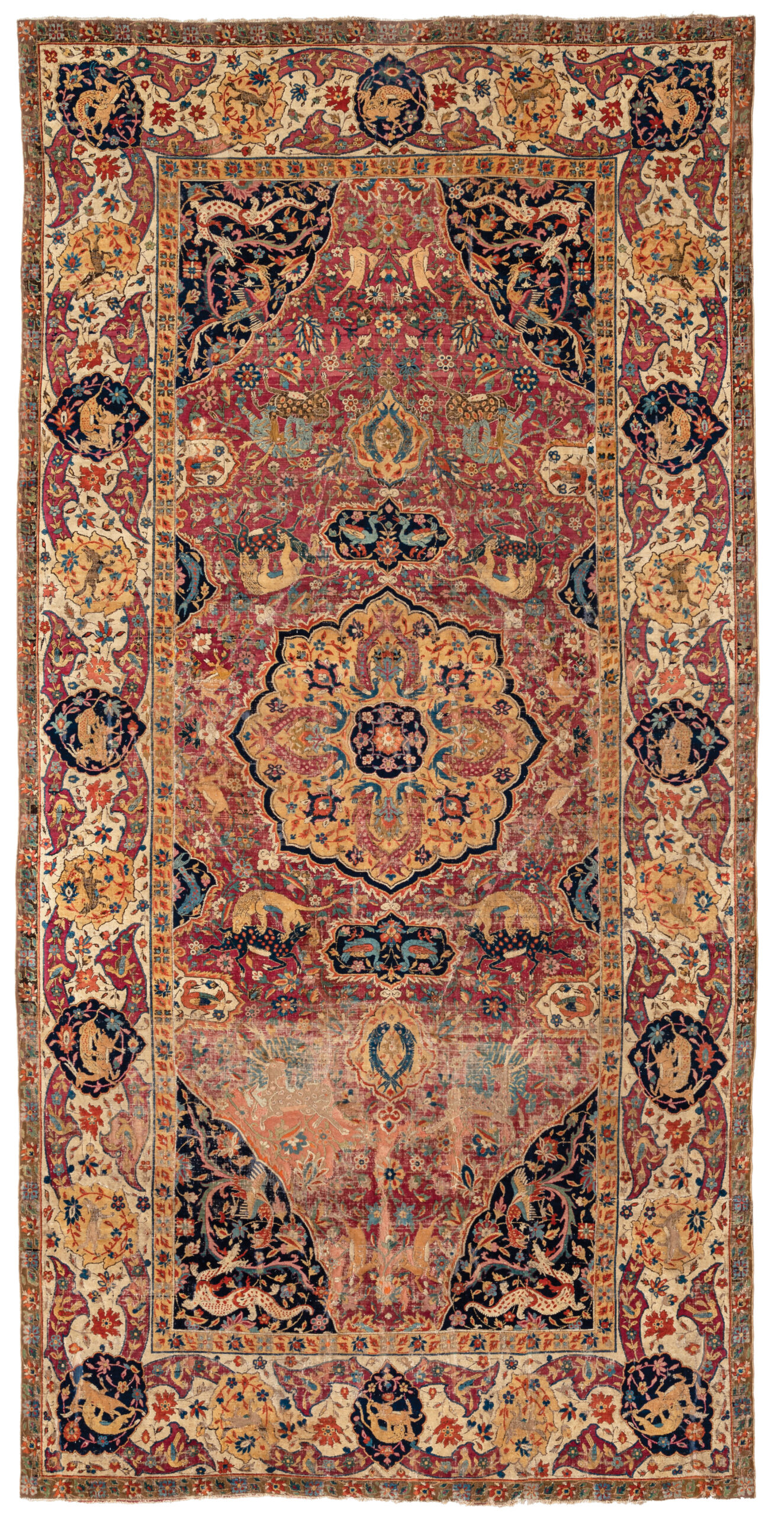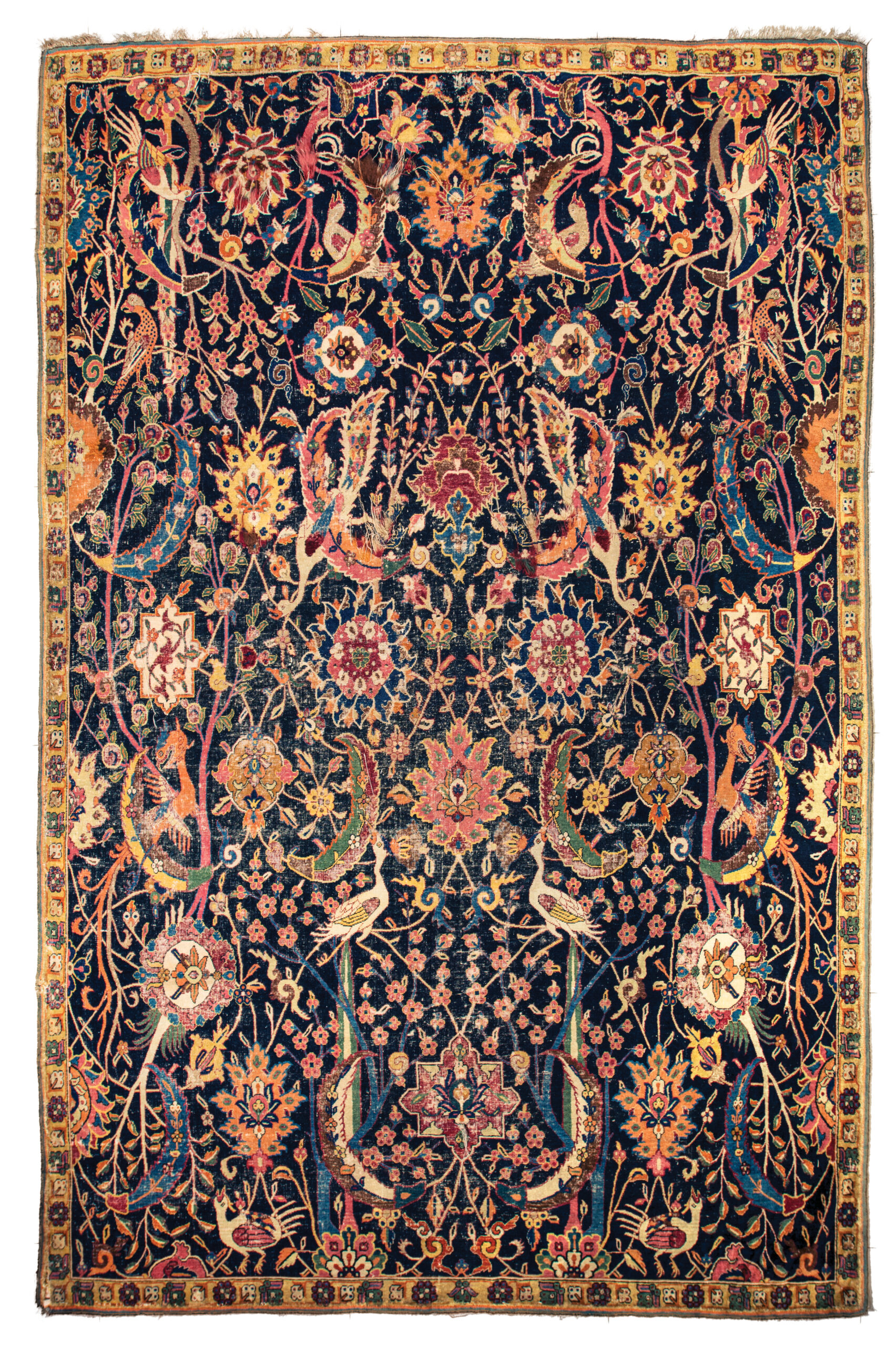The Magnificent Sanguszko Carpets
Held in the Palazzo Rosso in Genoa, ‘The Magnificent Sanguszko Carpets’ presents the 16th-century Persian Kerman ‘Sanguszko-type’ carpets together for the first time. More than four hundred carpets from the Kerman region are known from the 16th and 17th centuries. The Sanguszko carpets are just one group from this region. Carpets from Kerman have been compared with some of the most outstanding knotted pile masterpieces made in the first half of the 16th century in the capital cities of Tabriz and Qazvin, as well as those glorious silk carpets attributed to Kashan. The Sanguszko group may well be among the oldest extant carpets from the Kerman region, although carpets must have been woven there for many hundreds of years.

One of the highlights of the exhibition is the Miho Sanguszko carpet (shown above). The lively drawing, complex design and superb material quality of this carpet suggests a textile fit for a King. It was possibly made for the Safavid Shah of Persia, Tahmasp (b. 1514, r. 1524–1576), whose carpets furnished permanent palaces, as well as temporary apartments within tented cities when he travelled across his royal domain.

Another highlight is the Valencia de Don Juan Sanguszko carpet (shown above). At the very centre of this carpet lies a tiny red circle. From this point, a stunning design radiates outward. The red circle, the centre of an ivory flower, resides in the middle of a larger yellow-ground medallion with paired sturgeon, seen in other Sanguszko carpets and in earlier examples from Tabriz. The pinkish-red field of the carpet is filled with floral ornament, little of which passes beneath the medallions or cartouches, creating the impression of an in-filled rather than an endlessly repeating background.
Shown below is the 16th century Sanguszko throne carpet, Southern Persia, Moshe Tabibnia. At first glance, one might hesitate to label this carpet a ‘Sanguszko’. It does not resemble the overall designs of medallion and pictorial carpets from this group, although it does share its characteristic sole surviving yellow ground minor border with many of them. Here, against a dark midnight-blue, vegetal ornaments with nestled birds proliferate. The design displays complete symmetry across an implied vertical axis, resulting in mirror images for motifs like the large curved sickle leaves or elongated leaves with serrated edges. Despite the strikingly different composition of this carpet, the colour palette, weave structure, and strong wool with dense threads closely resembles others of the Sanguszko group.

A colloquium entitled ‘The Kerman Carpets of the Safavid Period (1501-1736)’, held in honour of Alessandro Bruschettini, will take place on 10–11 February 2023. This two-day colloquium will bring together carpet experts, historians of art, and specialists from other disciplines to catalyse new research and foster dialogue about the fascinating carpets attributed to the Kerman region of Safavid Persia. Speakers will address a range of topics: revealing new findings about the technical structure of Kerman carpets, investigating the histories and significance of particular carpet patterns and designs, discussing these patterns and designs within a larger artistic milieu, and interrogating the politics, history, and economics of Safavid Kerman. Featured speakers include Michael Franses, Robert Hillenbrand, Moya Carey, Anna Beselin, William Robinson, and Rudi Matthee. Additional sessions will be held to give participants behind-the-scenes access to the exhibition and connect the carpets on display with these new and exciting directions in the study of Kerman carpets. Register your interest to attend.






















Comments [0] Sign in to comment